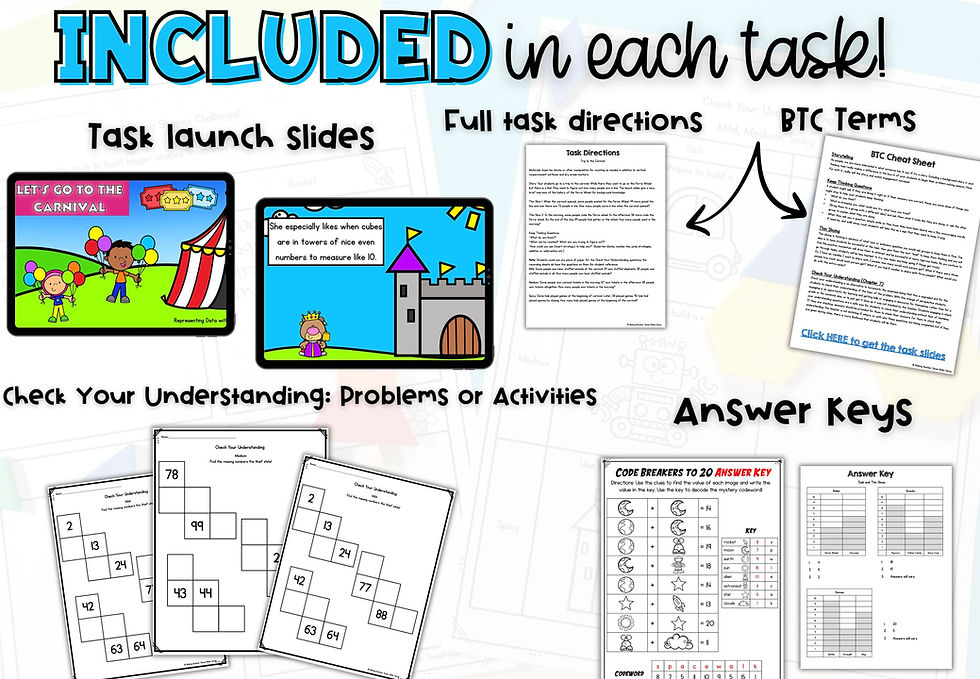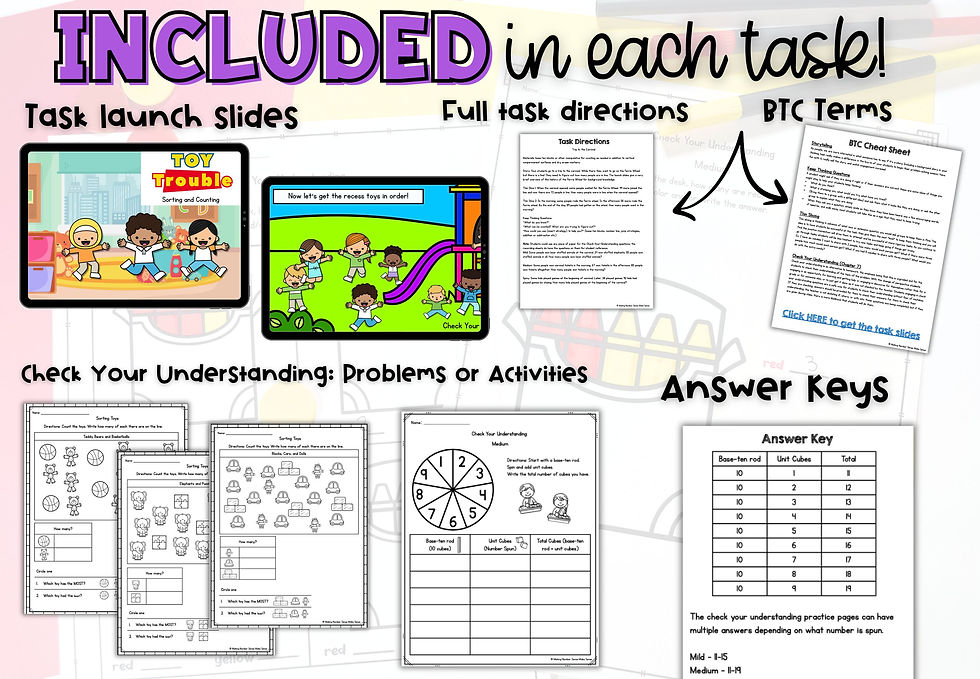Patterns Are Everywhere: Teaching Patterns in Kindergarten
- Lara

- Jan 31, 2023
- 5 min read
Patterns are such a fun concept to teach and for students to learn. Once they start creating patterns, it can grow into an obsession, making patterns with everything! I have found learning about and creating patterns are accessible to most students because it is so visual and hands-on!
So why learn about patterns?
When learning about patterns, your students may begin to see patterns everywhere; in nature, in music, in stories, in their daily schedule and routines, and once they grasp the concept of patterns, they can begin to think about patterns in our number system which is a foundational skill in math to deepen their understanding and number sense.
Adding Patterns to Your Day

Calendar Math:
We start learning about patterns on day 1 in calendar math, changing patterns each month. I used to use the calendar curriculum provided by the school but since 2020 I’ve gone digital! I love that it is more customizable in a digital format.
Daily Routines:
Daily routines or a consistent narrative are so important to set up so your day runs smoother and it gives kids a sense of safety allowing them to be ready for learning. When you explicitly teach patterns the kids start to recognize patterns in their daily lives.
Morning Meeting/Circle Time:
Make a Pattern Greeting: For this greeting, I give each student a bear counter but you can use any manipulative you have. I start the pattern in the middle of the circle, for example, blue bear, green bear, blue bear, green bear, and then the person whose turn it is to greet a classmate will greet someone whose color comes next in the pattern and add their own bear to the pattern in the middle. An activity/game that I like to do with the kids is called Catch My Pattern. In it, I make a movement pattern like clap, stomp, clap, stomp, and see if the kids can “catch my pattern” by making the same one. After a while and they get the hang of it, you can take volunteers to be the leader and we all try to catch their pattern. In a combination of the two previous ideas, you can have the kids start off making a pattern in a line everyone can see with their body like arms up, arms down, and see if when it is the next person's turn they can finish the patterns.
Teaching Progression
How many times when you were in high school were you sitting through geometry or calculus and being like when am I ever going to use this again? I can tell you for me it was a lot so when I'm teaching a new concept I really like to make sure that I point out to the kids when they would use this in real life so that they can create a deeper connection instead of just being like “oh this is one more thing that my teacher wants me to learn about.”
Teaching Patterns
Warm Up
So I usually like to start most of my math lessons with a little bit of a warm-up and the one that I use for patterns is a simple question, what does this pattern belong to? in it I have a zoomed-in picture of some kind of pattern that that you might see in the world and I ask the kids to talk about themselves or share with me what do you think this pattern is from. I usually start with something easily recognizable and as we progress through the unit I get closer in or do something a little more tricky that they might not know yet. This gets them thinking about patterns and the repetition that you see in patterns and then you move on to the mini-lesson.
Mini-Lesson, Interactive Practice
I usually make the first pattern that I teach the kids and AB pattern is usually a color pattern because it's the easiest for kids to see and recognize. I ask the kids what they notice about the image that I'm showing and usually, someone will say it's a pattern or they might notice that it repeats, and then I'll ask them what do you think would come next in the pattern how they know. I then go on to show them a different AB pattern and give them some kind of manipulative that they can use and I ask them to recreate the same pattern that I have shown.
At this point, I usually circulate so some kids get it right away some need a little bit more help and I may give them tips like just get out the colors that you need for this pattern so you don't get confused or I might say just get three of each color so they're not spending all of their time creating these piles of cubes when what they really need to be doing is trying to recreate the pattern. If they are making the same pattern as me I won't usually have them share but as we move on through learning those patterns if I tell them just make an AB pattern or an ABC pattern then I might have a few of them share like the colors that they used and what their patterns look like.

Common pattern types- It's up to you how many patterns you explicitly teach but here are some more common pattern-type ideas
You can take a closer look at how exactly I set up the patterning lessons and the slides I use or watch this video that I will also have at the bottom of the page.

Pattern Math Centers-
After about shared and cleaning up our work I usually introduce them to a pattern Math Center that is really just recreating patterns instead of extending or creating their own patterns just so some of the students who weren't quite sure about patterns kind of have an idea of what it's supposed to look like.
You can get my free snap cube pattern mats and this is usually the first center that I introduce. After they start to become more familiar with recreating patterns, I start to add patterning centers where the students have to extend a pattern that is already started then pattern activities where they can make their own patterns completely! Are you looking for pattern math centers for your whole unit?

Here are some examples of pattern centers I use!
For this pattern math station, your students will be matching the colors to the cubes to complete the pattern. Some students will put all of one color then all of another but I try to encourage them to make the pattern in order so that when they don't have a pattern to follow, they will understand what it feels like and looks like to create a pattern.
For this pattern center, you’ll spin the spinner and what it lands on is the core or root of the pattern. Your students will start by recreating the root and then continuing the pattern in the space under the spinner.
Create your own pattern-
You can really use anything you have to have your students create patterns like building block STEAM toys beads, cubes, popsicle sticks, double-sided counters, square-inch tiles, and more!
Let me know if you try out any of these activities or lessons!
Moving forward
Like I said I usually start with an AB pattern and the kids are just recreating the pattern that I show. Eventually, I moved to them creating their own AB pattern that we share out and then gradually start to introduce different types of patterns like an ABC pattern or an AABB pattern in a similar way.
It's also really important to let the kids know and let the kids see that patterns don't have to just be color patterns. They can be shapes patterns can be objects patterns can be sounds patterns can be things so giving them an opportunity to work with different kinds of materials when they are creating their patterns can be really helpful for them to generalize the idea of patterns and eventually be able to apply that understanding and knowledge to number patterns in our number system like on a hundreds chart.
Likewise with the math centers that I introduce I start with them just recreating a pattern and then we'll move on to extending a started pattern and eventually move on to them creating their own patterns whatever kind of pattern they would like. in my next post, I'll go more in-depth with the different kinds of pattern math centers for kindergarten that I like to use but if you'd like to sneak peek in the meantime you can find all of my favorite math patterning centers right here.




Comments